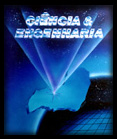CARACTERIZAÇÃO DE LAMAS DO CORTE DE GRANITOS COM VISTA AO USO EM OBRAS GEOTÉCNICAS
Resumen
A indústria de extração e beneficiamento de rochas gera um grande volume de resíduos, sendo que o que mais causa danos são as lamas, provenientes da serragem e polimento. Este trabalho envolve experimentos laboratoriais da lama de serragem de granitos produzida uma industria do interior de São Paulo, tratando de sua classificação ambiental, caracterização geotécnica, química e mineralógica, análise de resistência do resíduo puro e com incrementos de cimento além da sua classificação pela metodologia MCT, visando a utilização desse resíduo em obras geotécnicas. Os resultados mostraram que o resíduo é classificado como não perigoso, sendo um silte de baixo índice de plasticidade com cerca de 58% de quartzo (SiO2). O resíduo puro possui resistência a compressão simples de 0,4 MPa e coesão de 54 KPa e ângulo de atrito de 35º. Com incremento de 2% de cimento a resistência a compressão simples atingiu 1,2 MPa e com 5% alcançou 2,4 MPa. A classificação MCT resultou em um NS' (Solo de comportamento não laterítico - siltes, siltes arenosos) de baixa permeabilidade. Aplicações em misturas de solo para pavimentos e camadas de impermeabilização são potenciais aplicações para o resíduo. Palavras-chave: Blocos de granitos, lama abrasiva, ensaios geotécnicos, classificação MCT. CHARACTERIZATION OF GRANITE CUTTING SLUDGE FOR GEOTECHNICAL PURPOSES ABSTRACT The industry of extraction and rock processing generates a large volume of waste, being the most pronounced harm caused by the sludge from cutting and polishing processes. This work deals with the characterization of the granites cutting sludge of a sawmill in the northeastern part of the state of São Paulo (Brazil), related to its environmental and geotechnical characterization, chemical and mineralogical aspects, analysis of resistance of pure material and with increments of cement in addition to their classification by the MCT Methodology, in order to use this residue in geotechnical purposes. The results showed that the residue is classified as not dangerous, showing a low plasticity index containing about 58% of quartz (SiO2). The pure residue has unconfined compression strength of 0.4 MPa, cohesion of 54 KPa and the friction angle of 35º. The unconfined compression strength reached 1.2 MPa with an increase of 2% of cement and 2.4 MPa with 5% of raising. The MCT classification resulted in a NS' (non lateritic behavior soil - silts, sandy silts) of low permeability. Potentially applications of the residue are soil mixtures for paving and waterproofing coatings. Keywords: Granite sawing, abrasive sludge, geotechnical tests, MCT classification.Descargas
Publicado
2017-03-13
Número
Sección
Engenharia Civil


